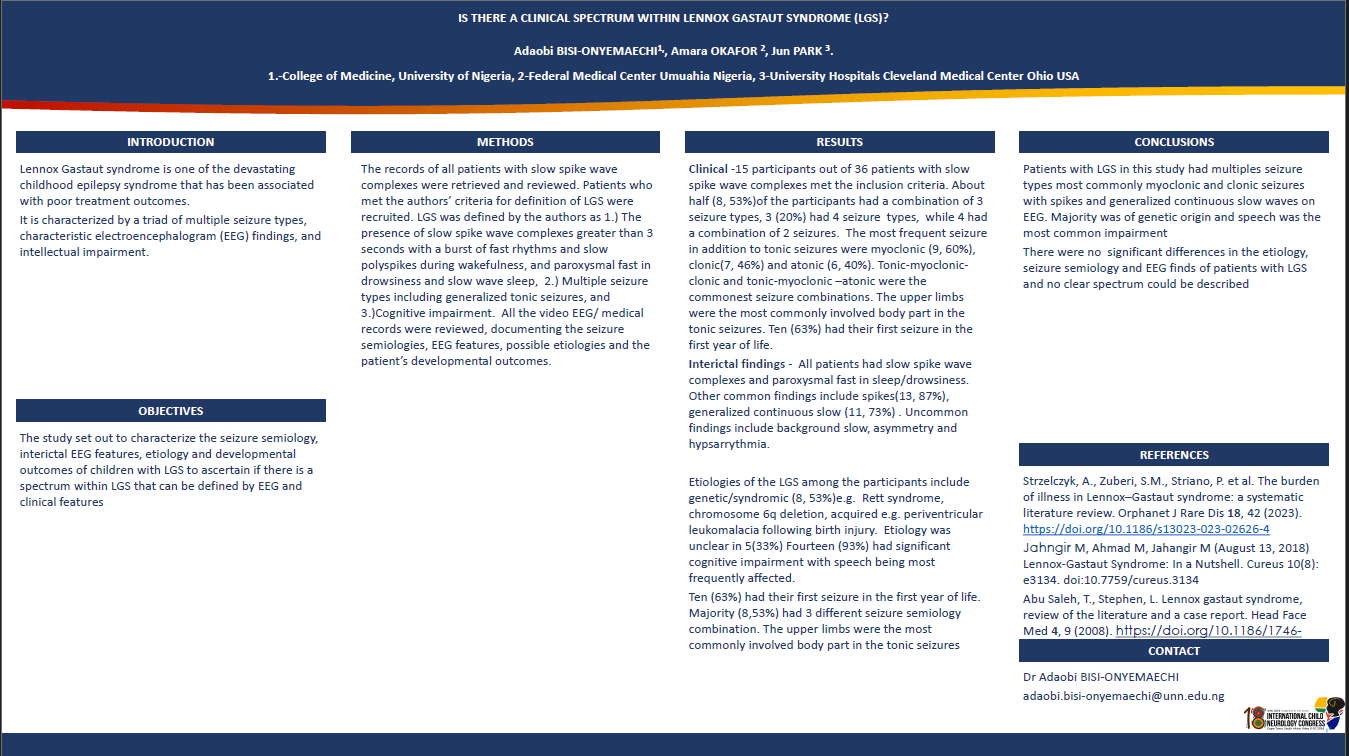Is There A Spectrum Within Lennox Gastaut Syndrome?
IS THERE A CLINICAL SPECTRUM WITHIN LENNOX GASTAUT SYNDROME(LGS)? Adaobi Bisi-Onyemaechi, Jun Park
OBJECTIVES- The study set out to characterize the seizure semiology, interictal EEG features, etiology and developmental outcomes of children with LGS to ascertain if there is a spectrum within LGS that can defined by EEG and clinical features. METHODS- The records of all patients with slow spike wave complexes were retrieved and reviewed. Patients who met the authors’ criteria for definition of LGS were recruited. All their video EEG/ medical records were reviewed, documenting the seizure semiology, EEG features, possible etiologies and the patient’s developmental outcomes. RESULTS – A total of 36 participants with slow spike wave complexes were seen in the records. 15 met the researchers’ inclusion criteria with an almost equal gender distribution. Ten (63%) had their first seizure in the first year of life. Majority (8,53%) had 3 different seizure semiology combination. The upper limbs was the most commonly involved body part in the tonic seizures. All patients had slow spike wave complexes and paroxysmal fast in sleep/drowsiness. Four participants did not have polyspikes. There were no differences in the etiology, semiology or developmental outcomes among four that did not have polyspikes. Etiology was syndromic in 7(47%). Fourteen (93%) had significant cognitive impairment with speech being most frequently affected. CONCLUSION- There were no significant differences in the etiology, seizure semiology and EEG finds of patients with LGS and no clear spectrum could be described. LIMITATION-This study was limited by the small sample size.
Adaobi Bisi-Onyemaechi
College of Medicine, University of Nigeria
Nigeria
Jun Park
Neurological Istitute, University Hospitals, Cleveland Medical Center.
United States
